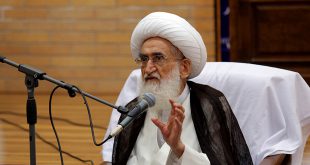The present chapter introduces two Iranian female mujtahidahs, Sayyida Nuṣrat Amīn (1886 – 1983) and Zuhrah Ṣifātī (1948 – ), who represent like few other contemporaries the status of female religious authority in 20th century Iran, divided by the important caesura of the 1979 revolution.
A nascent stream of scholarship has brought to light the quite significant involvement of women in the transmission of ḥadīth , especially between the 10th and 16th centuries . Jonathan Berkey, Renate Jacobi, Mu ḥ ammad Akram Nadwi, Richard Bulliet and Asma Sayeed have documented why within Islamic scholarship the field of ḥadīth transmission was particularly amenable to women, especially when compared to theology and law. By contrast, the role of women in the generation rather than transmission of Islamic knowledge is yet little documented. Although numerous references to individual examples of female theologians, and at times even Islamic jurists, exist, their lives and work have hardly been the subject of scholarly inquiry. In the case of modern Iran, we know of more than 100 women, mostly daughters and wives of influential scholars, who made a name for themselves in fields of Islamic learning, among them dozens who received the mujtahid rank. Yet their presence in the [end page 127] contemporary literature is limited to brief references to their names and origins. Analyses of their works and contributions to Islamic knowledge, as well as the limits thereof, are still wanting.
The present chapter introduces two Iranian female mujtahidahs, Sayyida Nuṣrat Amīn (1886 – 1983) and Zuhrah Ṣifātī (1948 – ), who represent like few other contemporaries the status of female religious authority in 20th century Iran, divided by the important caesura of the 1979 revolution. Nuṣrat Amīn is one of the most influential Shīʿah female religious authorities of modern times, who in her own right granted men ijāzahs of ijtihād and riwāya . Zuhrah Ṣifātī is the most prominent female religious authority of the Islamic Republic and was a long-time member of the Women’s Socio-Cultural Council (shūrā-yi farhangī ijtimā-i zanān), where she headed the committee on fiqh and law. Both women’s work was strongly influenced by the socio-political environment in and against which they defined the ms elves. Sayyida Nuṣrat Amīn experienced Iran’s Constitutional Revolution of 1906 in her early twenties, Zuhrah Ṣifātī the 1979 Revolution in her early thirties. While Amīn underwent her formative period as an Islamic scholar at a time when madrasahs were slowly replaced by secular public schools and religious courts by the apparatus of a modern state judiciary, Ṣifātī experienced the reversal of some of these reforms when the 1979 Revolution sought to Islamicize the entire legal system and expand the status of religious learning.
 Ijtihad Network Being Wise and Faithful Muslim in the Contemporary World
Ijtihad Network Being Wise and Faithful Muslim in the Contemporary World


Salaam Alaikum,
I can’t seem to see the whole article. When I click on read more I get taken to a 3 page document on finance.
Syeda Wasia Hasan
Salaam Alaykum Dear brother. kindly thank you for your comment. there was a problem with the link.it fixed. now you can read or download it.